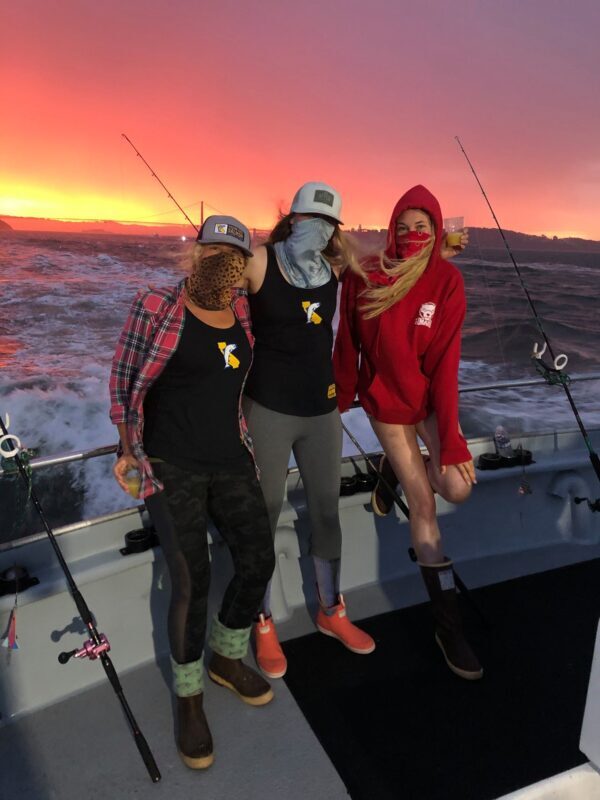Dan Bacher via Daily KOS
Thursday February 25, 2021 · 5:34 PM PST

San Francisco, CA — State and federal fishery managers during the California Department of Fish and Wildlife’s annual salmon fishery information on-line meeting today forecast there are about 271,000 adult Sacramento Valley fall-run Chinook salmon now in the ocean off the West Coast, about 200,000 fish lower that the 2020 forecast.
This compares to the 473,183 salmon forecast a year ago at this time and suggests some restrictions are likely to be enacted in the 2021 salmon fishing season, reported John McManus, president of the Golden State Salmon Association.
The Klamath River fall Chinook abundance forecast of 181,500 adult salmon is “slightly higher” than the 2020 forecast, but still significantly lower than the long-term average and will “likely result in restricted fishing opportunity” in the areas north of Pt. Arena, according to the CDFW.
“Klamath River fall Chinook abundance forecasts and spawner returns have been low over the last few years,” said Kandice Morgenstern, an environmental scientist with the California Department of Fish and Wildlife’s Ocean Salmon Project. “Fisheries were limited on the northern sections of the California coast last year to reduce impacts on this stock, and that will likely be the case again this year, Furthermore, with a reduced abundance forecast for Sacramento River fall Chinook, we could be looking at reduced fishing elsewhere along the coast, as well.”
In the coming months, the Pacific Fishery Management Council (PFMC) will use this forecast and other information to set times and areas open to both sport and commercial ocean salmon fishing for 2021. “If restrictions are deemed necessary, we’ll learn of them then,” said McManus.
Recreational anglers and commercial salmon trollers at the meeting provided comments and voiced their concerns to a panel of fishery managers, scientists, and industry representatives. Many charter boat captains at the meeting urged the fishery managers to adopt a 20 inch minimum salmon size limit and provide as much time on the water as possible.
A total of 473,000 plus Sacramento River fall chinook salmon were forecast last year, but after the number caught was added to those that returned to spawn, the real number came out to be 370,000, about 22 percent fewer than forecast, noted McManus.
About 138,000 adult salmon returned to spawn in the Sacramento Basin during 2020, around 105,000 fewer than the 233,000 salmon predicted to return to spawn, according to CDFW environmental scientists at the meeting.
In addition, about 14,000 jacks (two-year-old salmon) returned to spawn, the scientists reported. The jack number in 2020 is used to forecast the number of adult salmon officials believe are now in the ocean.
McManus said the reason for the drop off in the 2021 salmon forecast is “chronic over-diversion of Central Valley rivers.”
He said 2020 returns were also bolstered by added hatchery production in 2017 that contributed to the 2020 fishery. There was no additional hatchery production to aid 2021 fisheries and returns.
“It will be several more weeks before we begin to learn what kind of restrictions we might see on fishing this year, but the treatment of our salmon resource by freshwater managers as an afterthought is taking its toll,” emphasized McManus.
The 2021 Klamath ocean abundance forecast for fall run Chinook salmon was not very promising, with an estimate of 135,569 age 3 fish, 45,125 age 4 fish, and 815 age 5 fish, said Dr. Michael O’Farrell of the National Marine Fisheries Service.
“The number of fish that returned to the Klamath Basin, although slightly better than forecast, was still not enough to plot a 2021 commercial fishery free of concern,” stated McManus. “Commercial fishing in the Fort Bragg zone, stretching from Pt. Arena to just north of Shelter Cove in southern Humboldt County, will likely be limited in 2021.”
“Since juvenile salmon are considered one year old when they leave the Central Valley in the spring, and most return as three year old adults, you can usually count on good fishing two years after lots of rain and snow,” according to McManus. “Although there was decent rain and runoff in 2019, this year’s forecast is poor, in part because of the severe decline of salmon in the last drought.”
“Drought could revisit us almost anytime, including this year. We need to build and fortify in the good years so we don’t get wiped out again in the bad,” said GSSA secretary Dick Pool. “That’s why GSSA is working overtime to get salmon recovery, habitat improvements, and hatchery improvements on the state’s radar.”
Regina Chichizola, co-director of Save California Salmon, also commented on the poor salmon abundance estimates for Sacramento and River salmon unveiled at the CDFW meeting today.
“There is another really bad salmon forecast for this year for the Sacramento and Klamath River zones,” said Chichizola. “California communities are already struggling for food, clean water and jobs. The fact is fish need water.”
“It is time to stop the Trump water plan, restore the Klamath’s tributaries such as the Scott and Shasta rivers, and restart the flow restoration processes in the Delta. It is not time for new reservoirs, diversions and a tunnel,” she noted.
“The stalling and water diversions are killing #California communities and rivers. We need to do better,” she concluded.
Three alternatives for this season will be developed during the virtual Pacific Fishery Management Council (PFMC) meeting, scheduled for March 2-5 and 8-11, 2021. Final regulations will be adopted at the April 6-9 and 12-15, 2021 virtual PFMC meeting. Meeting details and ways to attend can be found on the PFMC website.
To access materials and information presented at today’s meeting or to learn more about the salmon season setting process, visit the Salmon Preseason Process web page. For general ocean salmon fishing information, visit the Ocean Salmon Project web page or call the ocean salmon hotline at (707) 576-3429.
